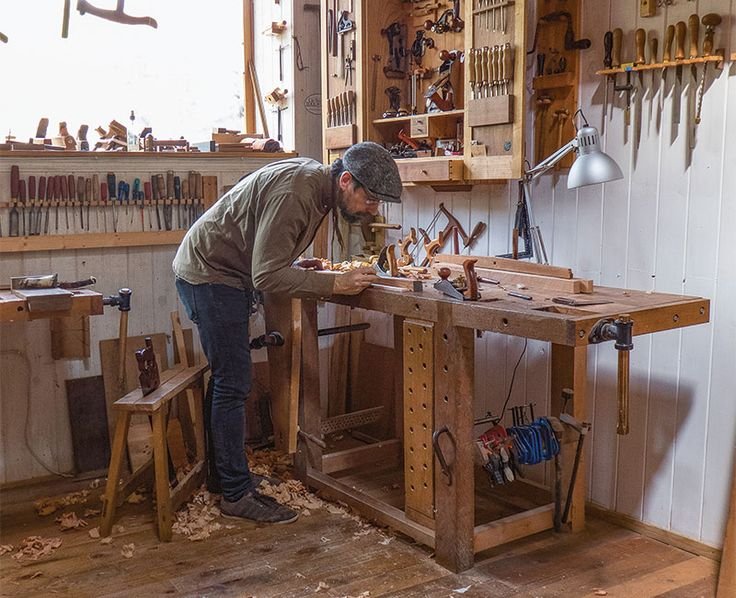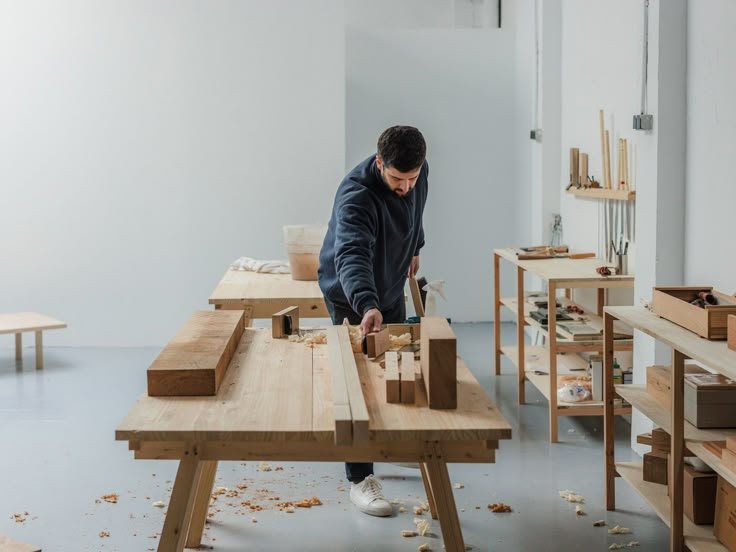A Journey into Japanese Woodworking
So, let me take you back a few years because there’s this whole chapter of my life that I still can’t believe really happened. You know how some people have that calling, right? Like, they hear a woodpecker, and suddenly they’re envisioning a masterpiece in walnut? Yeah. For me, that little whisper came when I decided to dive into Japanese woodworking. Just, uh, a casual little leap halfway around the world.
Now, I didn’t just wake up one day and decide, “Oh, I’m gonna learn Japanese woodworking.” Nah, it started with a trip to this laid-back woodworking expo, and I strolled past one booth that had these chisels. You know the type—glimmering, perfectly balanced, each one begging me to take it home. I swear I could hear the delicate whispers of craftsmanship. So, me, being the curious soul I am, I inquired. They began explaining the virtues of these chisels made by these ancient craftspeople from Japan, and something clicked.
Fast forward a few months, and I’m nestled deep in the heart of Kyoto, surrounded by the smell of fresh cedar and varnish. I signed up for a workshop with a master craftsman—like, the real deal. He was this wiry old guy named Mr. Tanaka. Man, that dude could swing a chisel like no one’s business.
Now, if there’s one thing I regret not understanding ahead of time, it’s that Japanese woodworking is not about speed. It’s an art, a meditative process. I think I was a bit cocky, imagining that I could just show up and start creating beautiful furniture right away. Boy, was I wrong. I remember the first real mistake I made—well, okay, I made a lot, but one really stood out.
That One Messy Joint
So, we were working on this basic joint, simple enough, right? Yeah, I thought so too. I was so focused on trying to copy Mr. Tanaka’s every move that I kinda neglected the whole “measuring twice, cutting once” mantra. I hurriedly cut the wood without really checking my angles. When it came time to fit the pieces together, it just didn’t happen. I mean, they didn’t even come close.
You ever have that moment when you almost want to just shove the pieces together, like you’re trying to force a square peg into a round hole? I felt my face getting all hot. Mr. Tanaka saw what I was doing, and the poor guy had this way of looking at you that made you feel like you just failed a math test. He gently took the pieces and showed me, again, how to do it right.
That’s the thing about patience, I learned. It’s not just some vague virtue; it’s practically essential. I was so eager to see the final product that I forgot to break down the process into manageable little milestones—little victories, if you will.
Tools and Sounds
Now, let’s talk about tools. If you’ve never held a Japanese saw, you gotta picture this. They’re super thin and versatile—no more “push and pull” nonsense from the old Western style. With these, you pull the saw toward you, and there’s just this satisfying whoosh that fills the air. There’s almost a kind of melody to it, if that makes sense.
The chisels? Man, they’re incredible. I used one from a brand called Matsumoto, and it has this beautiful octagonal handle carved from cherry wood. The moment it touched the freshly cut cedar, I could feel those tingles down my spine. You gotta love how they treat the wood over there, though—it’s so much more than just, I don’t know, lumber. The rich, warm notes of the cedar and that sharp, tangy scent when you first slice into it—it’s a whole experience.
Almost Giving Up
But there were definitely times I thought about quitting. After messing up the joint so badly, it spiraled into a mini-crisis. I was standing there, saw dust hovering in that golden light of the shop, feeling just utterly defeated. I stared at the stack of wood sitting there, which suddenly felt like a giant mountain. I was ready to bolt back home and never look at another chisel again. What the heck was I thinking?
Ah, but then, miraculously, something clicked. I looked around and saw the others, just as focused and sometimes fumbling with their own mistakes. Laughing, sharing tips, making errors, fixing them together. It was like being in this big communal circle of madness and learning. That little flicker of camaraderie caught my eye and lit a fire under my behind, somehow.
The Moment of Clarity
Eventually, we all got to this point where, after days of meticulous effort, our projects began taking shape. I still remember that moment—after countless chisel strokes, frustrations, and a few accidental thumps to my own thumb—I finished a little stool. It had that classic Japanese style, simple yet elegant. I almost cried when I saw it come together.
Of course, it wasn’t perfect, but in my eyes, it was beautiful—like a reminder of all the screw-ups and small victories along the way. I laughed like a madman when the legs finally fit just right. It felt surreal.
Final Thoughts
So, if you’re even halfway thinking about diving into woodworking, especially Japanese style, just go for it. Seriously. It’ll open up layers of understanding not just about crafting, but even about yourself. You’ll mess up and you’ll get frustrated, but I promise you’ll learn more than you expect.
And yeah, embrace every moment of doubt. Every time you feel like screaming at that stubborn wood, just remember—you’re not alone in that frustration. We all have our moments. Just breathe, grab that chisel, and get back to it. You might just surprise yourself with what you create. Cheers!









